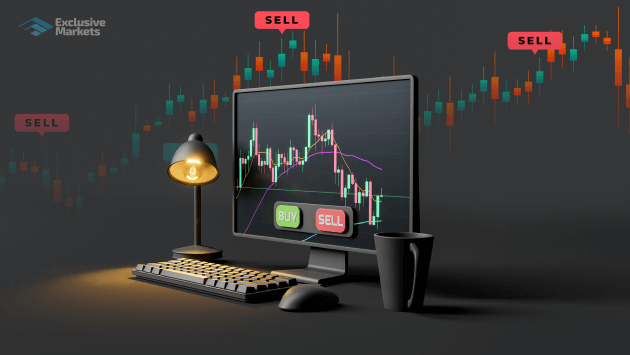
Understanding Forex Trading: Meaning, Mechanisms, and Market Dynamics
Forex trading, or foreign exchange trading, refers to the process of buying and selling currencies in the global market. It is the largest financial market in the world, with trillions of dollars exchanged daily. The core of forex trading lies in the concept of currency valuation—investors seek to profit from the fluctuations in exchange rates between different currencies. For those interested in engaging with this dynamic market, understanding the forex trading meaning Argentina Brokers landscape is crucial for making informed trading decisions.
What is Forex Trading?
Forex trading involves trading currency pairs. Each pair consists of a base currency and a quote currency. For example, in the EUR/USD pair, the Euro is the base currency and the US Dollar is the quote currency. When trading forex, a trader may buy or sell these pairs based on their predictions about currency value changes. If a trader believes that the base currency will strengthen against the quote currency, they will buy the pair. Conversely, if they think the base currency will weaken, they will sell it.
The Mechanics of Forex Trading
The forex market operates 24 hours a day, five days a week, and is divided into different trading sessions aligned with global financial centers: the Sydney session, Tokyo session, London session, and New York session. This continuous trading provides ample opportunities for traders to engage at different times, based on their strategies and market movements.
Key Participants in the Forex Market
Various participants engage in forex trading, each with distinct motivations and strategies:

- Central Banks: These institutions manage national monetary policy and may intervene in the forex market to stabilize or influence their currency.
- Financial Institutions: Banks and hedge funds actively trade currencies for investment and speculation purposes.
- Corporations: Multinational companies engage in forex trading to hedge against currency risk from international transactions.
- Retail Traders: Individual investors who buy and sell currencies via online platforms, often using leverage to amplify their trading potential.
Understanding Currency Pairs
As mentioned earlier, all forex trades are conducted in pairs. Understanding the relationship between two currencies in a pair is fundamental to forex trading. Currency pairs are classified into three categories:
- Major Pairs: These include the most frequently traded currencies, such as EUR/USD, USD/JPY, and GBP/USD. They are characterized by their high liquidity and tighter spreads.
- Minor Pairs: These pairs do not involve the US Dollar but still have significant trading volume, such as EUR/GBP and AUD/NZD.
- Exotic Pairs: These involve one major currency and one currency from an emerging or smaller economy, such as USD/TRY (US Dollar/Turkish Lira). Exotic pairs tend to have lower liquidity and wider spreads.
Types of Forex Analysis
Successful forex trading requires sound analysis and strategy. Traders often rely on three primary forms of analysis:
- Fundamental Analysis: This involves analyzing economic indicators, geopolitical events, and news releases that impact currency values. Factors such as interest rates, GDP growth, and employment data play a crucial role.
- Technical Analysis: Technical traders focus on charts, patterns, and various indicators to predict future price movements based on historical data.
- Sentiment Analysis: This approach gauges the overall mood of the market, assessing whether traders are bullish or bearish on specific currencies using surveys and reports.
Leverage and Margin in Forex Trading
Leverage allows traders to control a larger position than their actual capital would allow. For example, a leverage ratio of 100:1 means that a trader can control $100,000 with just $1,000 of their own capital. While leverage can amplify profits, it also increases the risk of significant losses. Understanding margin, which is the amount held in the trader’s account to maintain open positions, is also crucial for managing risk effectively.

Risk Management in Forex Trading
Risk management is a vital aspect of forex trading to mitigate potential losses. Traders commonly use the following tactics:
- Setting Stop-Loss Orders: These are predetermined points at which to close a trade to limit losses.
- Diversifying Trades: Spreading investments across different currency pairs can reduce exposure to any single risk.
- Using Position Sizes Wisely: Adjusting the size of trade positions based on account size and risk tolerance helps manage overall exposure.
Effective Strategies for Forex Trading
There are numerous strategies traders employ in forex trading depending on their individual goals and trading styles. Some popular strategies include:
- Scalping: This involves making multiple short-term trades to capture small price movements. Scalpers often hold positions for just a few seconds to minutes.
- Day Trading: Day traders open and close positions within the same trading day, seeking to profit from intraday price movements.
- Swing Trading: This strategy aims to capture price swings over several days or weeks, focusing on intermediate-term price movements.
The Future of Forex Trading
As technology continues to evolve, the forex market is also changing. The rise of algorithmic trading, artificial intelligence, and automated systems is reshaping how trades are executed. Additionally, regulatory changes and the impact of emerging markets will continue to influence trading strategies and methodologies.
Conclusion
Forex trading offers both opportunities and challenges for traders, from the novice to the experienced investor. Understanding the meaning and mechanics of forex trading is essential for navigating this intricate market effectively. By mastering analysis techniques, risk management strategies, and various trading styles, traders can improve their chances of success in the ever-evolving landscape of forex trading.